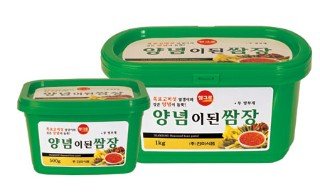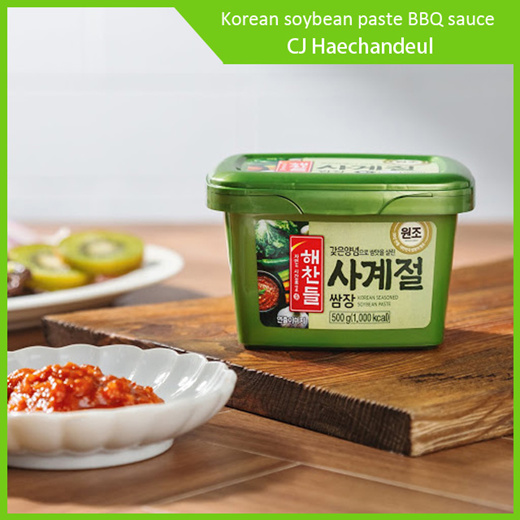

When the bricks harden, they are tied with rice straws to the eaves of the house, or put in the warm ondol room with rice straws, for fermentation.

The meju bricks are then dried in a cool, shaded area for a week to several weeks until firm.

About a doe (≈1.8 litres) or two does of pounded soybean is chunked, compressed, and shaped into a cube or a sphere called meju. Soybeans are soaked overnight, boiled in salt water, and then pounded in a mortar ( jeolgu) or coarsely ground in a millstone. Meju, Korean soybean brick, is made around ipdong in early November. Soup soy sauce is also made during the doenjang production. Production įurther information: Meju § Preparation drying mejuĭoenjang is made entirely of fermented soybean and brine.
Ssamjang soybean paste how to#
Gyuhap chongseo explains how to pick a date for brewing, what to forbear, and how to keep and preserve doenjang and ganjang. Joseon texts such as Guhwangchwaryo and Jeungbo sallim gyeongje contain detailed procedures on how to brew good-quality doenjang and ganjang. Sikhwaji, a section from Goryeosa (History of Goryeo), recorded that doenjang and ganjang were included in the relief supplies in 1018, after a Khitan invasion, and in 1052, when a famine occurred. In Samguk Sagi, a historical record of the Three Kingdoms era, it is written that doenjang and ganjang along with meju and jeotgal were prepared for the wedding ceremony of the King Sinmun in February 683. Jangdoks used for doenjang production are found in the mural paintings of Anak Tomb No.3 from the 4th century Goguryeo. The Records of the Three Kingdoms, a Chinese historical text written and published in the third century AD, mentions that " Goguryeo people are good at brewing fermented soybeans" in the section named Dongyi (Eastern foreigners), in the Book of Wei. The earliest soybean fermentations in Korea seem to have begun prior to the era of the Three Kingdoms. It is also a byproduct of soup soy sauce production. Doenjang ( 된장 "thick sauce") or soybean paste is a type of fermented bean paste made entirely of soybean and brine.


 0 kommentar(er)
0 kommentar(er)
